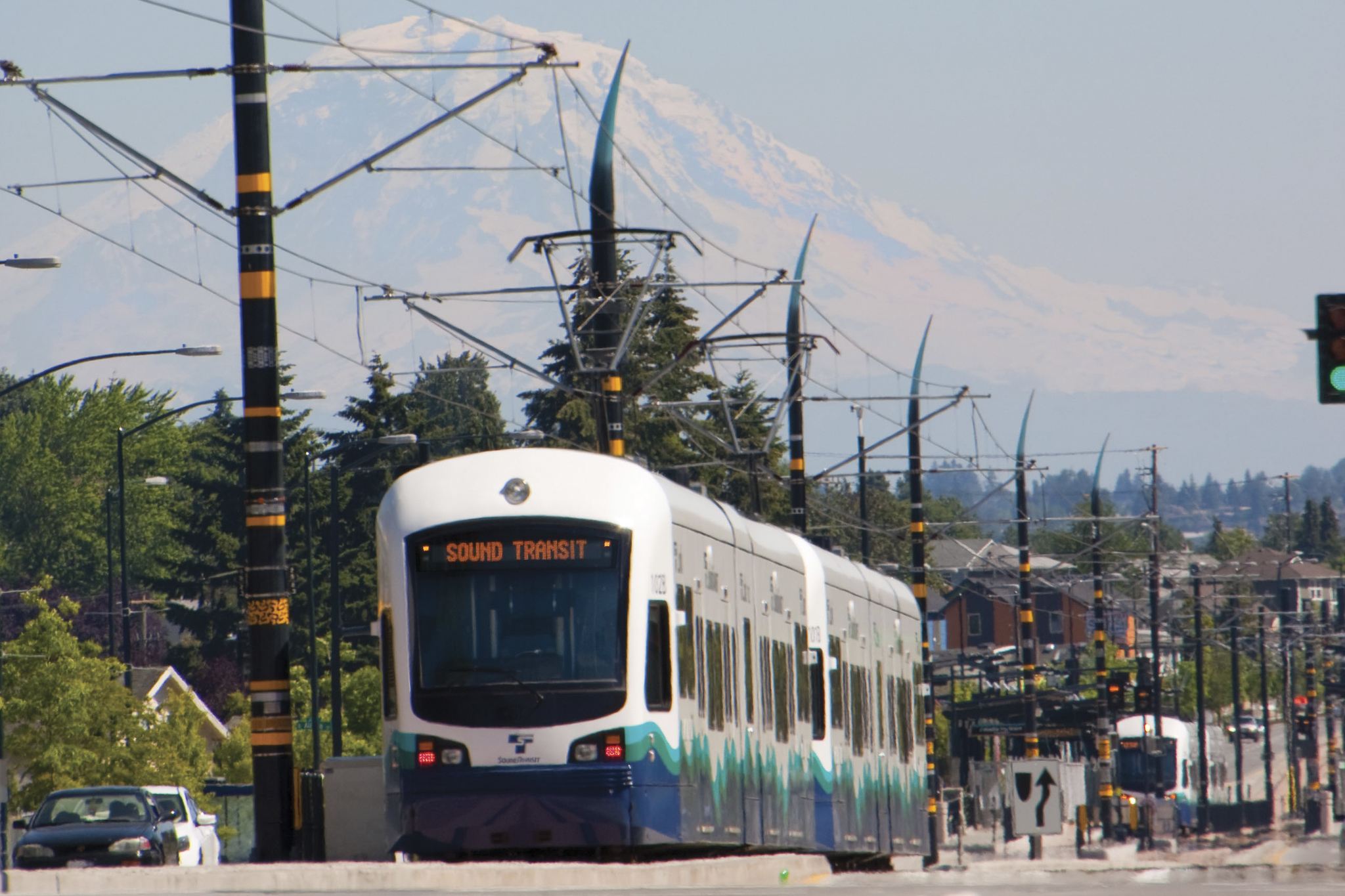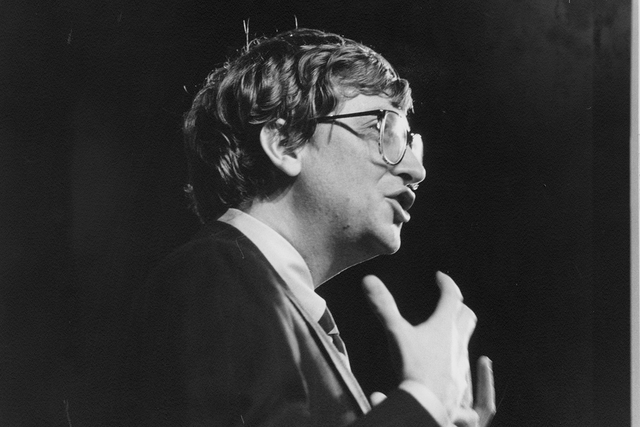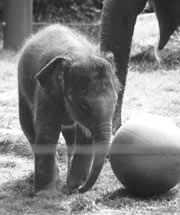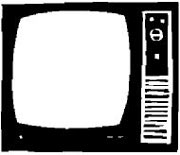Already pundits and officials are starting to talk about “the lessons to be learned” from the way Seattle has handled (and mishandled) anti-WTO protests—even as they brace for another day’s collisions and night’s melee. So why didn’t they remember the lessons they learned seven and a half years ago? As April turned to May 1992, thousands rallied, here as in other cities, to protest the acquittals of the Los Angeles police officers who beat Rodney King, and hundreds rampaged through downtown, throwing firebombs and smashing windows. The city largely anticipated the threat. Mayor Norm Rice hit the streets and the community meeting circuit before things erupted, urging forbearance and calming tempers.
In 1992, the Seattle Police didn’t use tear gas, pepper-spay canisters, flash grenades, or rubber bullets—even when rioters smashed windows at the East Precinct. Instead, plainclothes cops and fire marshals scattered on the downtown streets, speedily nabbing those who set fires or smashed windows.
But the police did make one big mistake in ’92. As the rioting wore into the wee hours, horse and foot contingents artfully swept the scattered storming bands and a greater number of casual cavorters into a teeming human pool and bodily pushed them up Pine Street, across the freeway—and onto Capitol Hill, the first neighborhood out from downtown, Seattle’s densest, youngest, and even on an ordinary night most raucous residential district. There, all hell broke loose. Rowdies raged down Broadway and the darkened side streets, setting dozens of fires, torching one apartment building, and igniting a fuel-tank fireball in an abandoned loft.
This year the city missed many of the beats it hit in ’92. Mayor Paul Schell, seeming aloof and nonplussed, issued plaintive pleas and the notorious “protest-free zone” order after Tuesday made downtown a war zone. The police failed to deploy surveillance and arrest teams, and promptly lamented the omission. Instead they fanned out in full armor, backed by State Patrol and King County officers in similar gear, standing in military formation against the walls of protesters. Behind those human walls was a free-vandalism zone, in which the notorious black-masked anarchists from Oregon and local looters of opportunity smashed and spray-painted at will, cannily exploiting the cover that the protesters and the police themselves unwittingly provided.
But Seattle’s centurions did repeat one trick from ’92—the one that backfired then and backfired again now. And they repeated it twice (so far): On Tuesday and again on Wednesday, they herded what have by now become the usual sorts of street protests up from the Convention Center area at Eighth and Pine onto Capitol Hill. The avowed strategy was to disperse the protesters by driving them ever further out—to Judkins? Madrona? Laurelhurst?—the effect achieved in 1992, though not to good effect. In 1999, however, they don’t even manage to disperse the protesters; instead they compact them on busy Broadway, swell their ranks with shoppers, neighbors, and passersby—and prompt new protests. In the process the Seattle Police have transformed the terms of the protest, unleashing rage and resentments that I fear will reverberate long after the World Trade Organization disappears from the city and the headlines. They have made themselves, rather than the WTO, the objects of the protest and of the swirling, inchoate grievances that coalesced around the trade conference. They have turned the Battle in Seattle into the Battle of Seattle, a collision of Seattle with itself.
Wednesday, Dec 1, 11:10pm
I arrive on Broadway after the night’s first round has already gone down. Several hundred have already marched down Broadway in a mingling of anti-WTO overflow from downtown and a scheduled, announced protest against the approaching execution in Pennsylvania of Mumia Abu-Jamal. According to stragglers now drifting back, the marchers thought to keep lanes clear and guide cars by. But the police broke them up with the usual volleys of rubber bullets and tear-gas and pepper-spray canisters—and, according to witnesses I speak to now and others who will call in later to the local public radio station KUOW, a level of one-on-one, in-your-face force not seen in earlier confrontations. Some say that the police chased both protesters and passersby down side streets, swinging their baton staves and lobbing gas and flash grenades. Others say they were awakened by the noise or aroused by the gas, came out to investigate, and stayed to protest. A neatly dressed male couple tell me they “saw people attacked who were just coming out of restaurants.” “I saw them grab a guy who was talking on a pay phone and spray an old woman who was walking to her car.” “One person fell down when he was being gassed, and they came up and kicked him.” Their accounts sound sincere, but I don’t witness anything like this during the following events.
Perhaps 200 people are milling around the east side of the junction of Pine and Broadway, across from Seattle Central Community College and the Egyptian Theatre. Three blocks further east is the Seattle Police East Precinct station, which was located here beside Seattle’s main gay nightlife district in the early 1980s after residents of the largely black Central District resisted it ending up on their turf. Since then, SPD has put on a more modern, human face, hiring gay and African-American officers, instituting community policing. Some in the CD have publicly lamented that they drove the precinct away, while many on Capitol Hill have embraced it—with the notable exception of the street kids along Broadway, who have tangled en masse with police before at this very junction.
I look around for black-swathed anarchists, but see none. Also missing are the nonchalant suburban gawkers who add an incongruous note to downtown riots. This seems very much a local crowd. “I live two blocks away,” says one onlooker, “and I’ve seen 150 people I know here.”
One stocky blond guy in frat-boy threads lugs a double armload of bricks to a US mailbox and starts sliding them down the chute. A particularly subtle form of vandalism? “I’m putting them in here to get them off the street, so nobody can throw them,” he explains. “We’re trying to prevent violence.” What will he do if he sees any thugs or vandals? “We might stomp them,” he says, as two friends join him. Is that what they came down for? “No, we came to protest the WTO. We’ll also be watching for police brutality.”
One litter can is smoldering around the corner on Broadway, but I see no graffiti beyond the usual, nor broken windows.
Wednesday, December 1, 11:30pm
Some are beginning to murmur about “getting the cops” while their friends urge them to stay peaceful. The crowd coalesces, grows, and begins edging toward 11th Avenue, where the police form a barrier across Pine. In the midst of it I see an incongruous figure: a balding, goofy-looking guy in tie and suit, pacing up and down, waving his arms as though to cajole, and resembling a larger version of Amazon chairman Jeff Bezos. It’s Brian Derdowski, the suburban King County Council member who, though a Republican, has tilted passionately against developers, local growth, the Multilateral Agreement on Investments, and the WTO—and who lost his seat to a developer-backed challenger in the fall election. “I’m just here to help out,” Derdowski explains as he works the crowd, speaking with a calm authority so unlike his usual giddiness, urging the angry protesters to get back before the police attack again. He strides to the police line, imploring the cops to hold back, but gets no visible response. “I can’t do this forever,” he says. “But if you clear the streets, there’s a reasonable chance we’ll win this confrontation”—winning apparently meaning getting the police to vacate. Many listen and step back, but their feet seem to pull them back into the street. Derdowski turns to the police line once again, but the chance for imploring is lost. Without audible warning, the flash grenades fly. The police fire the gas shells first into the crowd, then in front, leaving nowhere to go but back. Taking all the pepper spray I can, I feel my way back to Broadway and find an open, nearly full gallon jug of water sitting on a parking lot wall. Nothing to do but trust whoever left it; I flush eyes, nose, and throat.
Several collegiate-looking young women, the Florence Nightingales of the barricades, hurry past, holding squirt bottles of water and crying “First aid? First aid?”
Wednesday, December 1, 11:50pm
I loop around several blocks to 12th Avenue and head south toward the precinct, which is ringed by unmarked old school buses painted white and pale blue and officers in full armor. I ask for their commander or spokesman and am directed to a sergeant who has “nothing to say” to every question on the night’s events. But no one stops me as I pass Jim Foreman and a KING-5 cameraman, who are set up atop the hill, to join a KIRO-7 cameraman as close as he can get to the police line at 11th and Pine. We’re soon ejected from the perimeter, however, and join the protesters and onlookers. Twenty National Guardsmen in khaki guard each approach on 11th with batons rather than guns. If this were Kent State, the kids might only get bruises. The “Peacemaker” armored car that’s become such a familiar Seattle sight stands behind the front line, which is formed of heavily armed Seattle officers.
“Are you here to protect us or the WTO?” a voice shouts—the last reference to the WTO I’ll hear tonight. The crowd has re-formed, bigger than before, filling the street and sidewalk for most of a block. The loudspeaker on the Peacemaker booms: “It is illegal to block the street. If you do not leave, chemical irritants and other weapons may be used against you.” Again Derdowski, flushed from excitement or spray, is pacing and cajoling. He approaches the police line again and exchanges a few words, then returns to the crowd, shrugging with exasperation. “Listen,” he says to those who will listen. “I’m getting hoarse. You’ve got to help me get the word out.” They fan out waving and shouting, “Get out of the street! Get out of the street!”
It seems to be working. Most people pull back on the sidewalks. Will the police make a reciprocating gesture—dropping their batons to “at ease” position, say? They don’t budge a finger.
Another onlooker is telling me the East Precinct cops really aren’t such bad folks. “Most of them live in the precinct,” he says—which, if true, is a revolutionary change from the police norm. But there’s no way to tell if they’re here tonight; all on the front line, and the Guardsmen and State Patrol back-up, have their gas masks on.
A large black man with a gentle, scholarly expression tries to approach the line with a large piece of butcher paper reading “Peace.” Guardsmen hold up their batons and steer him aside. He tries to chat with the line: “Hey, you know, I got gassed yesterday and that really offended me. How would you feel? Say, have you tried to communicate with these people?” Finally he gets a response: A tall Seattle officer approaches and says, “Calm down.” “I’m talking to them, man.” “Just go, sir. Please back up.”
The nearest National Guardsmen can’t keep so professionally cool. He clenches his baton harder and says nervously, “You guys, there’s shit going on down there and we need shit going on here!”
Sure enough, the crowd has drifted back into the street, even closer to the line. A kid in pants baggy enough for the circus steps forward and moons the police. A single shot sounds and he jumps, apparently having taken a plastic bullet in the butt, and waddles back to crowd in perfect clown fashion.
“Go home! Go home!” the crowd shouts. “Get off our hill! Get off our hill!” This is no longer a protest against distant, faceless trade bureaucracies and multinational robber barons. It’s a fight for land. The Hill dwellers believe they’re defending their homes.
Thursday, December 2, 12:20am
A bottle is thrown. Officers flinch but don’t react. Some of the demonstrators unfurl an improvised banner as big as a Volkswagen, matching the peace-sign banner that’s waved all along. “We are residents” the new banner reads. “You are domestic terrorists! You go home!”
“You go home!” the refrain continues.
Thursday, December 2, 12:22am
Derdowski tries again: “I’ve got to have help with this! Please!” An older guy with a booming voice adds a longer exhortation: “In 1919, when Woodrow Wilson came out here, the Wobblies weren’t allowed to protest, so they just stood on the sidewalk and gave him the silent treatment. That’s how we’ll win!” This message does not travel far up the line.
Some demonstrators have been picking up the plastic bullets, rubber plugs, and gas canisters shot in the previous round, but apparently not to throw them back. They’re popular souvenirs. Seattleites are fast developing interest and expertise in the technology of crowd control. “The CS-2 gas is the worst,” one tells me.
Thursday, December 2, 12:46am
The rain, so far drizzling, starts coming hard. The chant turns meaner: “Nazi cops! Nazi cops!” I wince. But several of the onlookers beside me turn out to be from Washington, DC. They say they’re no fans of the notorious DC cops (who is?), but “even they would never handle it this badly. Yours are the worst.”
Four Hong Kong journalists, here for the conference, wander onto the scene, one carrying but not using a TV camera. I ask if they’re surprised at these events. “No, no, we can’t issue our opinion,” says one, smiling and hurrying on, “because we journalists!” I recall reading that China, which doesn’t like to give its own latent troublemakers ideas, has blacked out news of the Battle in Seattle (or, as of now, of Seattle).
“You are the Berlin Wall! You are the Berlin Wall!” one bicyclist shouts at the police.
Thursday, December 2, 12:58am
The spotlight goes on atop the Peacemaker.
One demonstrator starts gathering soggy leaves from the gutter and setting them meticulously in the DMZ between crowd and police. At first he seems to be laying out a giant peace sign, but it proves to be a spiral. They warn him not to take any leaves near them.
Derdowski, still trying, approaches the police asks them to lend him a megaphone so he can address the crowd, but they rebuff him.
Thursday, December 2, 1:05am
A skateboarder cavorts around the leaf pattern. An older guy on the side hollers out: “I’m a homeowner! I pay $2,000 in taxes! You work for me! I don’t pay you to smash a bunch of kids!”
A familiar chant rises: “A peaceful protest! A peaceful protest!”
One shaggy fellow scatters bogus “Clintonbucks” dollar bills along the street in front of the police, with the ceremonious attention of a Tibetan monk making a sand painting.
Thursday, December 2, 1:14am
A large upside-down US flag with “We the People” spray-painted across the stripes shows from the sidewalk. The crowd chants “We love you! We love you!”
A man walks up and turns his back to the cops, holding an even larger, unmarred, right-side-up US flag out like wings behind him. It flops over his head, blinding him entirely, but he stands still—an eloquent gesture of trust.
Thursday, December 2, 1:21am
The shaggy guy returns, picks up the bogus bills he dropped, ceremoniously burns them, and throws them toward the police.
Thursday, December 2, 1:25am
Officers get in the peacemaker. The crowd chants “No more!” for a minute and then “Whose streets! Our streets!”
Thursday, December 2, 1:29am
The guy in the flag is apparently too close now. The police grab him and drag him off, with the flag. “Let him go! Let him go!” the crowd chants.
Thursday, December 2, 1:33am
Two young couples begin waltzing, grinning and twirling, in the DMZ. I wonder if they’ve practiced on the brass shoe patterns set in the sidewalk on Broadway through a city public art grant.
Thursday, December 2, 1:37am
The demonstrators chants, “Shame! Shame! You should feel ashamed of yourselves!” at the police.
Thursday, December 2, 1:40am
They begin singing, earnestly: the theme from the Brady Bunch, then “Kumbaya,” “America,” and finally “Silent Night.” The chorus swells all along the block. I start to think they’re singing to celebrate because they think they’ve won. Maybe this confrontation will defuse itself. Who could riot after singing “Silent Night”?
Another fellow steps forward to stand still with his back to the police.
Thursday, December 2, 1:45am
With no audible warning, the loudest blast I’ve heard all week sounds, and a heavy volley of plastic bullets, flash grenades, and gas shells clears Pine Street again.
Thursday, December 2, 2:05am
The police squad leader raises his baton, the water truck that had been held in abeyance backs up, and the front line turns smartly and withdraws. I can only imagine how good bed must look to the cops, who have been standing largely immobile for three hours and working as many as 20.
Thursday, December 2, 2:14 am
No such luck. The stragglers are gathering into a crowd, much smaller and angrier than before. “Go away!” they shout at the police, who pause in their evacuation. “Last cop gets a rotten donut!”
“Come on,” one exhorts. “We might as well do something! We might as well show some opposition!” I see guys in black trenchcoats, their faces covered, who didnt seem to be here before, and, for the first time tonight, a kid with a gas mask.
Two demonstrators start rolling a dumpsterthe barricade material of choice in previous confrontationsout of an alley. But two more remonstrate with them and push the dumpster back.
Thursday, December 2, 2:26 am
The police regroup and face the two or three dozen diehards whove now reoccupied the street. The loudspeaker warns them twice to disperse. They dont. More gas, more plastic bullets, a few arrests, and the street is cleared.
Aftermath: Thursday, December 2, afternoon and evening
The wide outcry over police actions the night before finally prompts some official rethinking. Mayor Schell apologizes to “innocent” protesters and passersby who got gassed. He and Police Chief Norm Stamper announce a more flexible and realistic enforcement stance in place of the previous absolute ban on street blockages. They now want to encourage “peaceful” protests. Protesters should “cooperate with law enforcement,” “avoid direct confrontation,” and disperse if asked. The downtown no-protest zone is greatly reduced.
Protesters reciprocate. When hundreds block the King County Jail to demand their arrested comrades release, police deploy a minimal force, minus the heavy armor. The two sides negotiate to let an attorney in to see the prisoners. The crowd departs peacefully and marches up to Broadway and along last nights trail of teargas without incidentand with a police escort. “Everyone was on their best behavior,” says one marcher.
Friday, December 3, 12 pm
At a press conference, Schell clarifies: When he apologized yesterday to innocent victims of “tear gas, pepper spray and other necessary measures” he didnt mean to suggest police did anything wrong: “I have never seen police officers anywhere handle themselves with greater courage and professionalism.” He reiterates yesterdays kinder and gentler terms. Stamper calls last nights jail demonstration “very successful,” as though hed sponsored it. Across the street, the SPD officer guarding the old federal building makes a point of smiling and saying hi to the young street types walking past. They smile back. Trying patch things up, I ask? “Hey, I can turn 180 degrees like that,” he says, still smiling.







